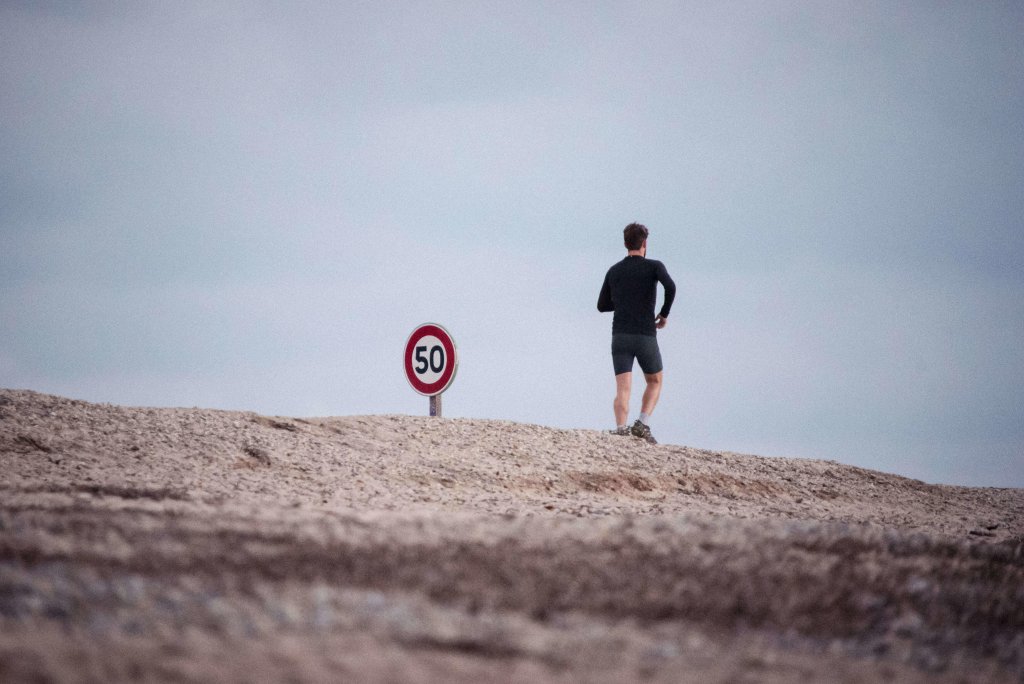What Should You Carry on a Long Run?

If you are training for a marathon, you’ve surely experienced it: the sleepiness, headaches, and pain that come after a long run. Unpleasant, sure. But the true threat of these experiences, for me, was that they made me doubt my ability to finish a 26.2-mile race.
It doesn’t have to be this way. Taking a few supplies with you on your long run can be the difference between hitting the wall and breaking through to the other side.

Below, you’ll find the supplies that are worth their weight in the long run. As you read, keep these simple guidelines about long runs in mind:
Better to be over-prepared than underprepared. If you are training for a marathon or a long-distance race, take more than you need at first, and whittle it down as your training progresses.
The long run is a laboratory. In this laboratory, experiment to find what nutritional supplements will work on race day. Use your long runs to test how your body responds to different products. Just be sure to dial it in several weeks before you are at the starting line.
What you carry in your body is more important than what you carry on it. Never start a long trip on an empty tank of gas. Use your daily training to understand what you should eat and drink beforehand and establish a pre-run routine. If, for example, you ate poorly for breakfast, the only thing you really need to bring is a phone to call for help around mile six.
Know your route. Exploratory running can be a blast, but for training purposes, it is really important to know the details of your route. Know the bathrooms, stores, and drinking fountains. If you are intimidated about a long run, avoid out-and-backs and try to incorporate some loops into the route.
Don’t psych yourself out. Long runs are just like any other run, just…longer. They are important, but they should not be feared. A successful run is a matter of good planning, not good luck.

Guidelines aside, it’s time for your long run and you are wondering, “What do I bring in order to optimize safety, speed, and enjoyment?” Let’s take a look at the basic necessities you should consider bringing on your long runs. By race time, you should have determined exactly what, and how much, to bring.
Water. This is pretty obvious. The difficulty here, though, lies in determining just how much water you can and should bring. The amount of water you need is determined by many factors. I carry about 24 ounces of water, sip every few minutes, and refill. If you know where some water fountains are along your route, use them. Stop at a store only if you need to. If you live in a rural area, drop some bottles of water along your route the night before (as long as you pick them up afterward!). Use your shorter runs to determine how much water you should be drinking. Staying appropriately hydrated is the most important step to achieving that post-run euphoria.
Money. During the course of a long run, a lot of things could befall you. You might need to pick up a sports drink or a snack, or you might want to finish your run at your favorite restaurant. Whatever the case, having a few bucks is a little added security and can boost confidence.
Nutrition. The debate over what to eat, and when to eat it, rages on. Whether it is in the form of gummies, gels, or bars, it is a good idea to carry along at least 75-100 carbs on a two-hour run. This is the equivalent of (depending on the brand) 2-3 gel packs, or 2 packs of gummy blocks, or 3-4 granola bars. This fuel will prevent you from cramping or hitting the wall. As with hydration, it is important to establish early on in your training the amount, frequency, and choice of food that you consume during the race. Once you find what works, stick with it and follow the routine every time — even if you don’t feel like you need it.
Electrolyte tablets. Replenishing electrolytes during exercise is vital for optimizing your performance and ensuring your safety. I carry at least 3-4 tablets on a hot day.
Cell Phone. Accidents do happen. Whether it’s a strained muscle, wardrobe malfunction, or something worse, a phone call to a friend or family member can be a lifesaver. And, heck, there’s no shame in calling for a ride home if you planned poorly and had to abandon ship at mile 13. A brighter option for phones: maybe you want to call someone mid-run to let them know just how great this long run is.
Toilet Paper. Just sayin’. It weighs nothing and has many uses, all of them important.
Sweatband. Nothing worse than salty sweat burning the eyes, and trying to rub it away with an equally sweaty wrist. I myself am an enthusiastic advocate for the return of the multi-colored sweatband.

Now that you’ve thought some on what to carry, you need to decide on how to carry it. This dilemma has led many runners to think, “Nah. I won’t bring anything.” But with a pack that fits you well, you’ll hardly notice the items are there.
Some options include:
Hydration pack. These are the best option for safety, but some find them to be overkill. Plus, they cover more of your body, which creates more opportunities for sweating and chafing. Check out our reviews of these to find the one that is right for you.
Water-bottle belt/fanny pack. I use one of these on longer trail runs, where water is scarce, in addition to carrying a bottle in my hand. Many of these also have a pocket that is the perfect size for your electrolyte tablets, nutrition, and phone.
Pockets and hands. This is my most common method for road runs. It is simple and cheap. I hold a water bottle (24-ounce) and carry everything else in my pockets. It’s important to find a pair of shorts with pockets that are big enough, but which don’t swing around too much. I’ve also noticed that I am better at drinking the appropriate amount if I carry a water bottle because it is always nearby.
We work awfully hard for that fleeting runner’s high. Don’t miss out on it by denying your body’s needs during the run. My best long runs end with me in the kitchen, flipping pancakes and singing along with Al Green. And most importantly, they charge my excitement for the next run. This success comes from careful preparation and packing. Carrying the needed nutrients, water, and equipment can carry you back home safely and ready for the long run.
Latest Articles
 Is Running on a Treadmill Easier Than Running Outside?Runners have their own preferences, whether it is treadmill running, running outside on the road, or exploring trails. So...
Is Running on a Treadmill Easier Than Running Outside?Runners have their own preferences, whether it is treadmill running, running outside on the road, or exploring trails. So... Is It OK to Use Trail Running Shoes on the Road?While trail running shoes can be used on roads, especially in situations where a runner encounters mixed terrains or pref...
Is It OK to Use Trail Running Shoes on the Road?While trail running shoes can be used on roads, especially in situations where a runner encounters mixed terrains or pref... How to Fix Sore Quads After Running?Rest, ice, gentle stretching, and over-the-counter pain relievers can help soothe sore quads after running. Also, ensure ...
How to Fix Sore Quads After Running?Rest, ice, gentle stretching, and over-the-counter pain relievers can help soothe sore quads after running. Also, ensure ... 10 Fruits With The Most Electrolytes to Replace Sports DrinksThese fruits are high in electrolytes such as potassium, magnesium, and calcium, essential for hydration, muscle function...
10 Fruits With The Most Electrolytes to Replace Sports DrinksThese fruits are high in electrolytes such as potassium, magnesium, and calcium, essential for hydration, muscle function...

